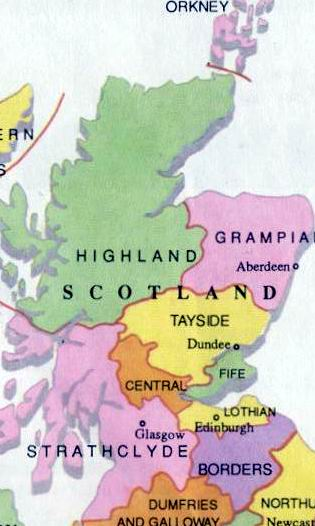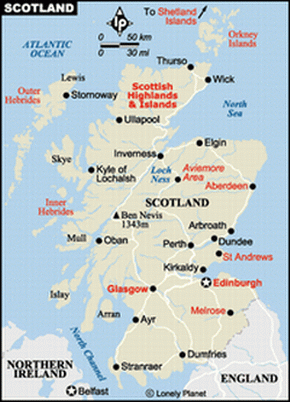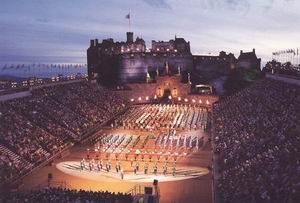
- •Министерство образования рф
- •Part I. The United Kingdom of Great Britain and Northern Ireland Unit1. Cultural aspects of geography
- •United Kingdom of Great Britain and Northern Ireland
- •National flag of the United Kingdom `Union Jack`
- •Physical Features, landscape.
- •England
- •Basic facts:
- •National flag of England
- •Dover Task 2. Read the description of counties and concentrate on cultural associations that geographical names have. While reading make a table:
- •Scotland
- •Basic facts:
- •National flag of Scotland
- •Edinburgh
- •Northern Ireland
- •Basic facts:
- •National flag of Northern Ireland
- •Basic facts:
- •National flag of Wales
- •Task 6. Check yourself questions:
- •Unit2. Population of the uk basic facts:
- •Migration
- •The English
- •The Welsh
- •The Scots
- •The Irish
- •The History and Structure of Immigration
- •Nationality Legislation
- •Culture
- •Asylum seekers bring many benefits
- •Britain opens door for skilled immigrants to fill hi-tech jobs
- •Race row hits Tories
- •Unit 3. Monarchy basic facts:
- •History
- •The Royal Coat of Arms and the Anthem
- •Kensington Palace
- •Task 3.Check yourself questions:
- •50 Facts about the queen's reign
- •50 Facts about the duke of edinburgh
- •Unit 4. Parliament
- •Basic facts:
- •Layout of the Palace of Westminster
- •The House of Lords
- •The House of Commons
- •Conduct of debates in the Commons
- •A typical day's business in the Commons Chamber.
- •Unit 5. Political Parties and Government basic facts:
- •Political Parties
- •The Party System in Parliament
- •Financial Assistance to Parties
- •Local Government
- •The iron lady
- •Tribute to john major
- •Theme 6. Law system
- •Types of Courts
- •High Court CoCourt basic facts:
- •Types of Schools
- •Entry requirement to British universities, colleges or jobs
- •Higher Education
- •Theme 8. Ways of Life in uk basic facts:
- •3. Parks in Great Britain
- •Ingredients:
- •Student d. Scotch Broth
- •Theme 9. Customs and traditions
- •Basic facts:
- •Christmas Traditions
- •Pearly Kings and Queens
- •Scotland’s symbols and traditions
- •The Night of Hogmanay
- •The New Year
- •Highland Games
- •Burns’ Night
- •Gretna Green Marriages
- •Welsh symbols and traditions
- •St David’s Day
- •Wishing Wells and Love Spoons
- •The Red Dragon of Wales
- •Eisteddfod
- •Noson Lawen
- •Cymanfa Ganu
- •Halloween
- •Symbols and traditions of northern ireland
- •The Red Hand of Ulster
- •Shamrock
- •White Ribbon
- •St Patrick’s Day
- •Easter Customs in Northern Ireland
- •Theme 10. Going out
- •Basic facts:
- •English Pubs
- •Pubs in Scotland
- •Irish pubs
- •Welsh pubs
- •January/February/March/April 2003
- •Part II. Republic of Ireland Unit 1. Land and People basic facts:
- •St Patrick’s Cathedral
- •Task 6. Check yourself questions:
- •Task 7. Match up the names of counties and their peculiarities.
- •Task 8. Choose a holiday in Ireland. Discuss the tours with a partner and choose one.
- •Theme 2. History of Ireland
- •Basic facts:
- •A Brief Outline of History
- •Theme 3. Political Life, Economic and Cultural Development of Ireland basic facts:
- •Contents
- •Theme 6. Law system. Skills developed: reading (interpreting facts, summarizing), classification.
- •References:
Scotland


Basic facts:

National flag of Scotland
The patron saint of Scotland: St. Andrew.
St Andrew’s Day: November,30, the Scottish national day.
The national musical instrument: Bagpipes.
The symbol of Scotland: Thistle.
The capital of Scotland: Edinburgh.
The largest lake in Scotland: Loch Lomond.
The national flag of Scotland: St. Andrew’s cross.
Ben means a mountain; glen means a valley; loch means a lake.
The oldest Scottish university: University of St Andrews.
Kilt made of tartan is part of traditional Highland Dress.
In 1603 James VI of Scotland became the first Stuart king in England. In England he was James I. The official union of Scotland with England was signed in 1707.

Edinburgh
Task 3. Read the text below and find all the described places on the maps. While reading continue the table of task 2.
On the map Scotland resembles an uncompleted jigsaw puzzle, a puzzle whose northernmost pieces overlap the latitude of Greenland and the southernmost the latitude of Omsk.
The country is divided broadly into Highlands, a group of massifs, moors, ravines and torrents, and Lowlands, which are not in fact low but are mainly a series of smooth hills and pastures intersected by river valleys and belts of manufacturing towns. There are a lot of beautiful lakes (lochs), picturesque vallies (glens) and magnificent peaks (bens) On the eastern seaboard, cliffs and headlands stand guard over river estuaries and angular bays. The West Coast is split into ragged promontories and inland seas (sea lochs), which overlook a panorama of 700 islands. Three distinct groups of islands, Orkney and Shetland in the North and the Inner and Outer Hebrides in the North-West, are rich in Norse memories (Viking culture). The land has two natural, geological divisions: the narrow neck of land, only 45 km (28 miles) from sea to sea, between the Firth of Forth and the Firth of Clyde, and the 93-km (58 mile) corridor between Inverness and Fort William. The people who live in Scotland originate from ancient Celts.
Lothian region is the most cosmopolitan of Scottish regions, partly because it was once part of Anglo-Saxon Northumbria (Lothian suggests Lud, a semi-mythical British king whose name crops up in several Saxon place-names). Its port of Leith has historical links with the continent of Europe. The capital of Scotland, Edinburgh, is situated in this region. It became the capital of Scotland in the 15th century. Edinburgh has manufacturing concerns, based on rubber, milling, printing and brewing. Edinburgh is also famous for the annual Festival of Music and Drama during which the colourful military parade (the Tattoo) takes place near Edinburgh Castle. Edinburgh Castle sits upon a rocky core of extinct volcano, which rises 133 metres above sea level. There has been a fortress here for around 1.400 years.
Queen Margaret, the English wife of King Malcolm III, spurred Edinburgh’s development in the 11th century. The crude stronghold was converted into a royal castle. Queen Margaret died here in 1093. Her youngest son David, crowned Scotland’s next king, dedicated a chapel – St Margaret’s – to his mother’s memory. It is Edinburgh’s oldest surviving building.
For centuries, Edinburgh Castle has been the symbolic and strategic prize in the battles between Scotland and England. It was razed to the ground in 1313 and began to evolve later that century into the form we see today.
The castle approach features esplanade, a parade ground built in 1753, where every year the Military Tattoo is held during Edinburgh’s summer Festival. The ornamental castle gatehouse was built in 1887. Surmounted by the Royal Arms of Scotland, it is flanked by statues of Scottish heroes, Robert the Bruce and William Wallace.
Crowning Castle Rock are the main castle buildings: a palace occupies three sides of a courtyard known as Crown Square and the Scottish National War Memorial the fourth. The palace was built in the 14th century. It contains the tiny bedchamber where Mary Queen of Scots gave birth to James I of England, uniting the two warring countries. The Great Hall dates from the early 16th century and was the meeting place of Scottish Parliaments until 1640. It was built by King James IV as a banqueting hall as a setting for ceremonial occasions. Restored in the 19th century, the hall features displays of arms and armour and a notable hammer-beam roof. Below the Great Hall are the vaults, now known as the French prisons. They were used in the 18th and 19th centuries to incarcerate French prisons of war.
From the Castle’s battlements salutes are still fired by cannon to mark special occasions. Every day (except Sunday) a gun is fired at one o’clock as a time check. Scots have a reputation of mean people, and there is a joke that they fire at one, not at twelve for the sake of economy.
The Royal residence in Edinburgh is Holyroodhouse.
Moments of history spring to life in the 13th-15th centuries castles of the Lothian shore, among them Blackness, Tantallon and Dunbar
The Borders region is to the North of England. There are medieval abbeys and castles. The bridge of Lammermoor reminds of the sad story, on which Donizetti’s opera ‘Lucia di Lammermoor’ is based. Lucia loved a poor man called Edgar but her brother was against their marriage. He persuaded Lucia that Edgar left her and she agreed to marry her brother’s rich friend. Then Edgar returned to Scotland. Lucia was in despair. She killed her husband and herself. Another legend of the Borders is that Merlin, the magician, who brought up King Arthur, is buried at the root of a thorn tree in a meadow at Drumelzier. As for the principal towns, they are Galashiels, Hawick, Melrose, Jedburgh and others. The Borders are associated with Sir Walter Scott who lived here and described this region in his novels. The river Tweed is the main river in this region. W. Scott built his house, Abbotsford, beside the river Tweed in 1817. Now there is a museum in this house, where you can see W. Scott’s desk, his chair, his books and pictures. He died in the house in 1832.
Dumfries and Galloway region partakes of the character of both Scotland and England. Dumfries town does not lack the literary associations – Robert Burns died and was buried there in 1796. Hugh Mac Diarmid (1892-1978), the only poet of international stature Scotland has produced this century, was born not far away. J.M. Barrie, the author of Peter Pan, went to school at Dumfries Academy. At Dundrennan, Mary Queen of Scots is said to have passed her last night in Scotland (1568) before her weary years of imprisonment in England.
Strathclyde. Glasgow, the biggest city in Scotland is situated in this region. Together with the shipyard towns and manufacturing conurbations up and down the Clyde, Glasgow still accounts for half of Scotland’s population. Glasgow sprawls over the middle belt of a region of mountains west out of Glasgow to sea lochs. The Clyde is an astonishing river, considering the vast ships, which have been launched there. A short distance upriver lies the shipyard, which led the world technologically from the time James Watt of Greenock developed the steam engine. Glaswegians are proud of their city. It suffered a severe decline in the past. First it lost the tobacco trade in the 18th century, then the cotton trade in the 19th century. Shipbuilding also declined. But now Glasgow is reviving. It has a lively tourist industry of two million tourists per year. Strathclyde is associated with Robert Burns. Now fully restored to its original state, Burns Cottage forms the heart of Burns National Heritage Park - a unique encounter with Scotland's most exceptional man. Set among the delightful scenery of historic Alloway, Burns National Heritage Park is an unmatched opportunity to experience Scotland's National Poet. You can view Robert Burns' beloved Ayrshire countryside from the roof of Burns Monument and experience the humour and excitement of Robert Burns best-loved tale in the Tam O'Shanter Experience. Near Blackwaterfoot there is King’s Cave, where Robert the Bruce is said to have hidden before gaining the throne of Scotland. Rob Roy, or Robert MacGregor, the romantic hero of Walter Scott’s novel of the same name, lived in Strathclyde. The real Rob Roy was the leader of a wild gang that terrorized the district around Loch Lomond. There is Rob Roy’s Cave near Inversnaid, which was used by the gang as a hideout and a meeting place. Rob Roy MacGregor died in 1734 and is buried in Balquhidder churchyard.
As for the Central region, the forts set up by the Roman general Agricola about AD 80, and the Antonine wall which connected them 60 years later, are little more than a few dots on a modern map. The Forth-Clyde belt was a cradle of industry, a hotbed of that Scottish mechanical genius to which engineering science is so much indebted. In 1790 Patrick Miller demonstrated a prototype paddle-steamer and in 1818 Sir John Robinson’s Vulcan, the first all-iron ship, took the water. Iron foundries on the Carron river built heavy guns for Nelson’s warship. One of the most important towns here is Stirling, where many Scottish kings lived in the local castle.
Central region is where Highlands touch Lowlands in clear juxtaposition. At one moment road and railway are gliding parallel across flat meadows; at the next, one is going past crags and canyons where silver birches precariously hang and cascade of bubbling torrents throw up their spray.
Tayside region covers the Tay from source to mouth, and much more Sir Walter Scott used the legends and landscapes of the region in several novels, notable Waverley, The Fair Maid of Perth and The Abbot. The latter describes the escape of Mary Queen of Scots form her island prison on Loch Leven. Perth used to be the capital of Scotland in the 12th – 15th centuries. A few miles away from Perth the ancient coronation place of the kings is situated. It is called Scone [sku:n]. At Scone, thirty four Scottish kings, including Robert the Bruce, were crowned upon the Stone of Destiny. The coronation stone, or the Stone of Destiny, was taken away to England by the English king Edward I in the 13th century. The stone of Scone was put under the coronation chair in Westminster Abbey and it was only recently returned back to Scotland.
In a field near Perth, the Scots king Kenneth escaped catastrophe on a dark night when a yell from an invader who trod on a thistle gave early warning of a surprise Danish attack. Legend says that after this event the thistle was adopted as Scotland’s national flower.
The region claims the oldest tree in the world, at the foot of Glen Lyon. Under it, or beside it the wife of a Roman centurion gave birth to the boy who became Pontius Pilate. Tayside is also associated with W. Shakespeare’s play ‘Macbeth’. Dunsinane, Tayside was the traditional seat of the Scottish kings, and Shakespeare’s witches prophesied that Macbeth would not be defeated until Birnham Wood should come to Dunsinane Hill. The prophecy was fulfilled when Macduff’s army concealed themselves with branches taken from Birnham Wood and then marched to Dunsinane.
The name Grampian developed from Graupius, which was the hillside where the Roman general Agricola defeated the Pictish tribes in AD 84. This was the greatest battle, in point of numbers involved, ever fought on British soil The Highland-man, so heavily romanticized, remained for more than a hundred years afterwards untouched by social progress. Ignorance, filial obedience to the clan chief and a capacity for enduring hardship were his characteristics. Balmoral castle is one of the Royal residences in Scotland. Aberdeen is the town connected with oil and gas industry. The British found the first oil under their part of the North Sea in 1969. They first took oil in 1975. They also bring gas from the North Sea since 1970.Aberdeen has a big harbour. Ships come to Aberdeen from Northern Europe.
Fife is famous for an ancient town St. Andrews. St Andrews is home of the oldest Scottish University founded in 1411 and the oldest golf club, which is called the Royal and Ancient Golf Club. People played a sort of golf in Scotland already in the 15th century. In the town of Dunfermline several Scottish kings including Robert Bruce are buried.
Highland region. Despite its harsh weather, the Highland region offers many popular outdoor pursuits like hunting, fishing, climbing, curling. Highland games is a very popular sports event. The main town of Highland region is Inverness. Not far from it is the famous Loch Ness. Scotland is famous for its Highland Whisky, which means “Water of life” in Gaelic.
